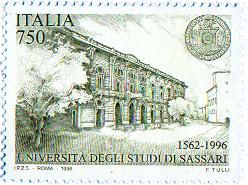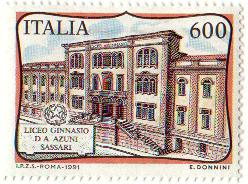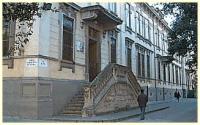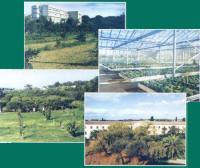
Historical mentions
on the University and on High Schools of
Sassari


| Historical mentions
| 
|
 During the fifteenth century Sardinia was dominated by Spain and the Sardinian
students who wanted to go to university had to travel to Italy or to Spain.
The birth of the University of Sassari is linked to the figure of Alessio Fontana who
left all his belongings to the municipality for the creation of a Faculty of studies.
In 1551 the Jesuits obtained from the pope the right to graduate in Philosophy and
Theology the lay-students who would follow their courses.
During the fifteenth century Sardinia was dominated by Spain and the Sardinian
students who wanted to go to university had to travel to Italy or to Spain.
The birth of the University of Sassari is linked to the figure of Alessio Fontana who
left all his belongings to the municipality for the creation of a Faculty of studies.
In 1551 the Jesuits obtained from the pope the right to graduate in Philosophy and
Theology the lay-students who would follow their courses.
 In 1617 Philippe III of Spain granted the status of Royal University to the Jesuits'
College for what regarded the academic degrees in Arts and Theology. This privilege was later
granted for the degrees in Medicine and in Law en 1632. There were then six hundred or seven
hundred university students.
In 1765 the University was later reformed on the model of the Piemontese University
but it kept the 4 faculties of Philosophy and Arts, Theology, Law and Medicine. By and by,
other departments were added.
The faculty departments of Mathematics, Physics and Natural Sciences were born in
Sassari in 1953 with only the course in Biology. En 1970 and in 1971 came the courses in
Natural Sciences and in Chemistry.In 1994 began the course in Environmental Sciences with
its decentred department in Nuoro.
The instruments that can be found in the faculty of Maths and Physics comes from the
University of Philosophy and Arts.
In 1617 Philippe III of Spain granted the status of Royal University to the Jesuits'
College for what regarded the academic degrees in Arts and Theology. This privilege was later
granted for the degrees in Medicine and in Law en 1632. There were then six hundred or seven
hundred university students.
In 1765 the University was later reformed on the model of the Piemontese University
but it kept the 4 faculties of Philosophy and Arts, Theology, Law and Medicine. By and by,
other departments were added.
The faculty departments of Mathematics, Physics and Natural Sciences were born in
Sassari in 1953 with only the course in Biology. En 1970 and in 1971 came the courses in
Natural Sciences and in Chemistry.In 1994 began the course in Environmental Sciences with
its decentred department in Nuoro.
The instruments that can be found in the faculty of Maths and Physics comes from the
University of Philosophy and Arts.
 The Liceo Classico was born in 1852, after the revolution of 1848 had put an end to
the old Church domination over school teaching.
The Liceo Classico was born in 1852, after the revolution of 1848 had put an end to
the old Church domination over school teaching.![Liceo Scientifico, facciata
[©2000 by Loreta Careddu]](/gabinetto_di_fisica/immagini/edificio.jpg) The Liceo Scientifico was born in Sassari according to a Royal Law in 1923 (following
Gentile's reform of the Public Education in Italy).
The Liceo Scientifico was born in Sassari according to a Royal Law in 1923 (following
Gentile's reform of the Public Education in Italy). On Dec 15, 1860 a teachers’ training school was opened in Sassari, in Pittalis
house, in Arborea Str. It offered a 3 year-course for the preparation of elementary
school-mistresses.
On Dec 15, 1860 a teachers’ training school was opened in Sassari, in Pittalis
house, in Arborea Str. It offered a 3 year-course for the preparation of elementary
school-mistresses. The history of the Istituto "Niccolò Pellegrini" is long and prestigious: it was born
in October 1894. In 1995 has been celebrated the centenary of the foundation. It has been the
occasion for the balance of an activity during a century.
The history of the Istituto "Niccolò Pellegrini" is long and prestigious: it was born
in October 1894. In 1995 has been celebrated the centenary of the foundation. It has been the
occasion for the balance of an activity during a century.